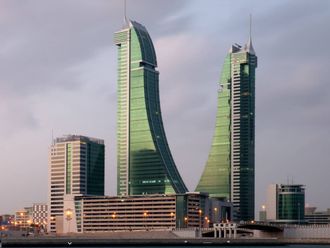Washington: The Navy plans to install a laser gun on a ship next year to zap dangerous swarming small boats and flying drones while in the Arabian Gulf.
Officials say the $32-million (Dh117.50 million) high-technology system offers the Navy a weapon at a fraction of the cost of its traditional arsenal — cruise missiles, as well as rapid-fire Gatling guns.
“Our conservative data tells us a shot of directed energy costs under $1,” Chief of Naval Research Rear Adm. Matthew Klunder said in a statement. “Compare that to the hundreds of thousands of dollars it costs to fire a missile, and you can begin to see the merits of this capability.”
The laser’s power also can be scaled down, presenting the Navy a non-lethal alternative to ward off threats such as pirates, terrorists and smugglers.
“Because lasers run on electricity, they can be fired as long as there is power and provide a measure of safety as they don’t require carrying propellants and explosives aboard ships,” the Navy said.
The technology, called the Laser Weapon System, was developed by engineers and scientists from the Navy, defence industry and academia. It involves commercial fibre solid state lasers and has already successfully shot down a flying target. It will be deployed on board USS Ponce in 2014.
The announcement to utilise the laser comes as military researchers continue to try to make progress on directed energy weapons.
In 2011, the Navy had success with another laser system mounted on a warship when it fired and set fire to an empty motorboat as it bobbed in the Pacific Ocean. It was the first time in history the Navy pulled off the feat. In what was once considered the stuff of science fiction, the development of laser technology has been fraught with setbacks.
Last year, the Missile Defence Agency’s airborne laser programme was cancelled after more than 15 years of development and $5 billion in federal funding.
The programme involved a Boeing 747 jumbo jet equipped with an advanced tracking system and a massive laser gun on its nose to identify and obliterate enemy missiles as they blast off. But the programme experienced a series of cost overruns and delays. It never went beyond testing.
The Navy’s desired targets with the Laser Weapon System are far smaller and slower. Following next year’s USS Ponce demonstration — which comes two years ahead of schedule — Navy and Pentagon officials said they will continue to research ways to integrate affordable laser weapons into the fleet.












